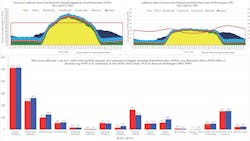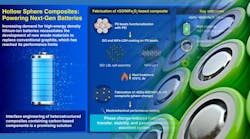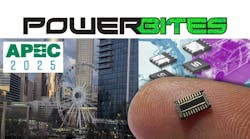Battery Storage Helps California’s Power Grid Set New Records for All-Renewable Production
What you’ll learn:
- The California Independent Operator Site (ISO) reported that its network set a new record for battery storage by accumulating and discharging a total of 42.6 GWh worth of renewable power during a 24-hour period.
- This represents 8.4% of total demand for the same period.
- The state’s continuing investments in sustainable energy have resulted in a 45% reduction in electricity generated by burning fossil gas.
If any doubts remain about battery storage being a practical way to accelerate the transition to renewable-energy sources, the recent performance of California’s electric grid should put them to rest. The California Independent Operator Site (ISO) recently published near-real-time information about the flow of electricity across high-voltage, long-distance power lines that make up 80% of California's and a small part of Nevada's grid. It reported that on Monday, April 21, 2025, battery storage set a new record for its contributions to supporting the network (see figure below).
California ISO notes that April 21 marked the 38th straight day, and 79th day within the past 111 days, that the state’s wind, solar, hydro, and geothermal energy resources were able to provide 100% or more of the state’s energy needs for a meaningful portion of the day. In addition, the state’s growing infrastructure of renewable-energy and storage resources has enabled it to reduce its use of fossil gas-generated electricity by 45% over the past two years.
Next in This Edition of PowerBites
More PowerBites
About the Author
Lee Goldberg
Contributing Editor
Lee Goldberg is a self-identified “Recovering Engineer,” Maker/Hacker, Green-Tech Maven, Aviator, Gadfly, and Geek Dad. He spent the first 18 years of his career helping design microprocessors, embedded systems, renewable energy applications, and the occasional interplanetary spacecraft. After trading his ‘scope and soldering iron for a keyboard and a second career as a tech journalist, he’s spent the next two decades at several print and online engineering publications.
Lee’s current focus is power electronics, especially the technologies involved with energy efficiency, energy management, and renewable energy. This dovetails with his coverage of sustainable technologies and various environmental and social issues within the engineering community that he began in 1996. Lee also covers 3D printers, open-source hardware, and other Maker/Hacker technologies.
Lee holds a BSEE in Electrical Engineering from Thomas Edison College, and participated in a colloquium on technology, society, and the environment at Goddard College’s Institute for Social Ecology. His book, “Green Electronics/Green Bottom Line - A Commonsense Guide To Environmentally Responsible Engineering and Management,” was published by Newnes Press.
Lee, his wife Catherine, and his daughter Anwyn currently reside in the outskirts of Princeton N.J., where they masquerade as a typical suburban family.
Lee also writes the regular PowerBites series.






